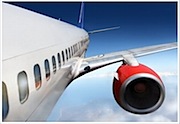
Good evening earthlings! This week’s last mega-earnings issue of PlaneBusiness Banter is now posted. This week we dig our way through the recent earnings results and calls from Pinnacle, SkyWest and Republic Holdings. Let me put it this way. This is not an easy time for regional airline operators. Three different stories, three losses.
In other news, we talk a lot this week about why it is I am concerned about the negotiations between the United Airlines and Continental Airlines pilots. This situation has gone on far too long. These negotiations should have been wrapped up in no more than 60 days.
But now negotiations have become centered around the big “S” word. Union squabbling, turf wars, and intra-union power struggles that all go back to ….seniority.
These two groups had a choice going into these negotiations: follow the blueprint set at Delta/Northwest or the blueprint set with America West/US Airways. Every day that passes — it appears both groups are following the wrong set of plans.
I tell subscribers this week why I believe these negotiations are now at the tipping point.
In other news, we talk this week about two analysts and their respective research reports. First, we talk about Avondale Partners analyst Bob McAdoo’s research note on AMR. It was, without a doubt, the most scathing review of the inability of management at the airline to do what it needs to do that I have read from any Wall Street analyst. As he points out — the airline continues to lose at least $1 billion in revenues as a result of bad decisions.
So — what are they going to do about it?
Gary Chase, analyst with Barclays, issued a nice preliminary review of what he thinks the Southwest/AirTran deal is going to mean to Southwest. Both short-term and longer-term. We’ve admired Chase’s take on Southwest for years — and his piece last week was no exception. Opportunity? Yes. But with risks.
We’ve got the March DOT Air Travel Consumer Report, we’ll go over how the airline sector did last week (I’ll give you a clue — jet fuel rose again) and we talk a bit about the upcoming IPO from Spirit Airlines, as well as the results issued Monday from Steve Hazy’s new Air Lease Corp.
And more!
Subscribers can access this week’s issue of PlaneBusiness Banter here.
